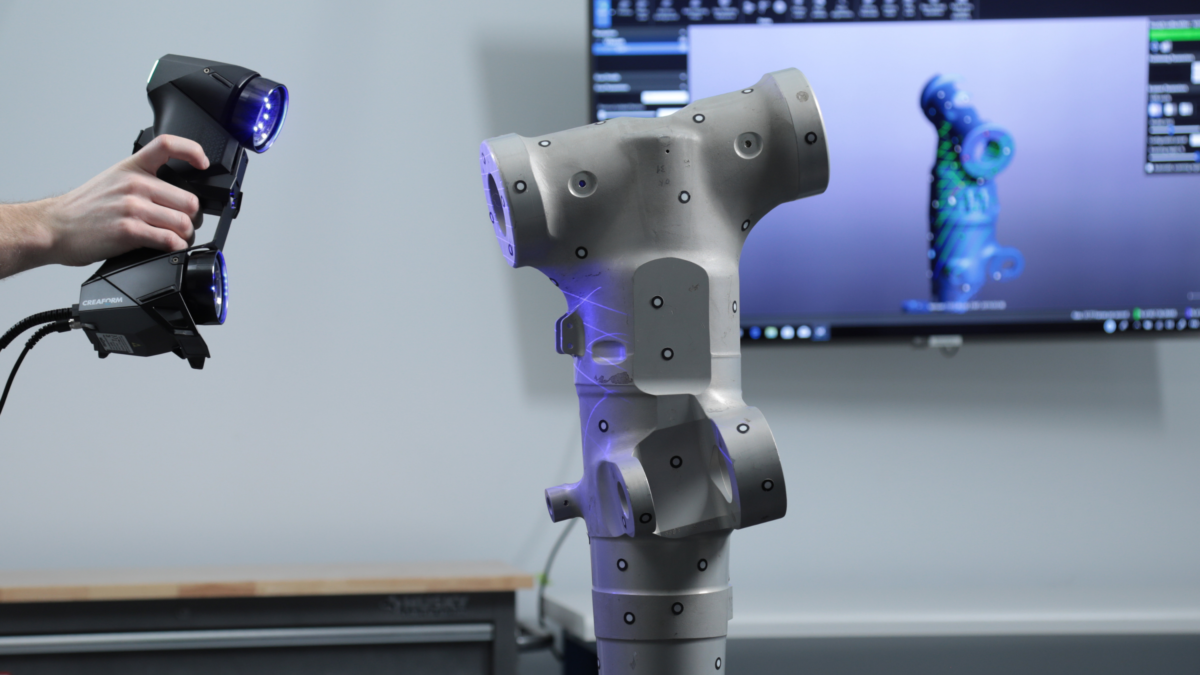Three-dimensional (3D) laser scanners are remarkable tools that capture detailed information about objects and environments in the form of point clouds, which can then be used for various applications such as reverse engineering, quality control, and cultural heritage preservation. But how exactly do these scanners work?
Overview of 3D Laser Scanning
Principle: 3D laser scanners use the principle of LiDAR (Light Detection and Ranging) to measure distances to objects. They emit a laser beam that reflects off surfaces, and the time taken for the beam to return is used to calculate distances.
Types: There are two main types of 3D laser scanners: terrestrial and handheld. Terrestrial scanners are stationary and used for large-scale projects, while handheld scanners are portable and ideal for smaller objects or hard-to-reach areas.
Read Here: CAD Software & 3D Laser Scanners: Detailed Design Workflow
Components of a 3D Laser Scanner
Laser Source: Emits a laser beam, typically in the near-infrared spectrum.
Scanner Head: Houses the laser source and optics to direct and focus the laser beam.
Mirror System: Reflects the laser beam to scan different parts of the object.
Photodetector: Receives the reflected laser beam and measures the time taken for it to return.
Control Unit: Manages the scanning process and collects data from the photodetector.
Software: Processes the data to create a 3D point cloud.
How 3D Laser Scanners Work?
Scanning Process: The scanner emits a laser beam, which is directed towards the object by the mirror system. The beam reflects off the object’s surface and returns to the scanner.
Time-of-Flight Measurement: The scanner measures the time taken for the laser beam to return to calculate the distance to the object’s surface.
Multiple Scans: To capture the entire object, multiple scans from different positions are required. These scans are later aligned to create a complete 3D model.
Applications of 3D Laser Scanning
Engineering and Construction: Used for creating detailed as-built models of buildings and infrastructure.
Manufacturing: Helps in quality control, reverse engineering, and prototyping.
Cultural Heritage: Used for documenting and preserving historical artifacts and monuments.
Forensics: Helps in crime scene reconstruction and analysis.
Virtual Reality and Gaming: Used for creating realistic 3D environments.
Advantages of 3D Laser Scanning
Accuracy: Provides highly accurate measurements, often within millimeters.
Speed: Can capture detailed 3D data quickly, reducing the time needed for data acquisition.
Non-contact: Does not require physical contact with the object, reducing the risk of damage.
Versatility: Can be used in various industries and for a wide range of applications.
Challenges of 3D Laser Scanning
Cost: High-quality 3D laser scanners can be expensive.
Complexity: Requires specialized knowledge and training to operate.
Data Processing: Handling and processing large amounts of data can be time-consuming.
Conclusion
3D laser scanning is a powerful technology that has revolutionized the way we capture and model 3D data. Its applications are diverse, ranging from industrial metrology to cultural heritage preservation. While there are challenges associated with 3D laser scanning, the benefits it offers in terms of accuracy, speed, and versatility make it an indispensable tool in various fields.


